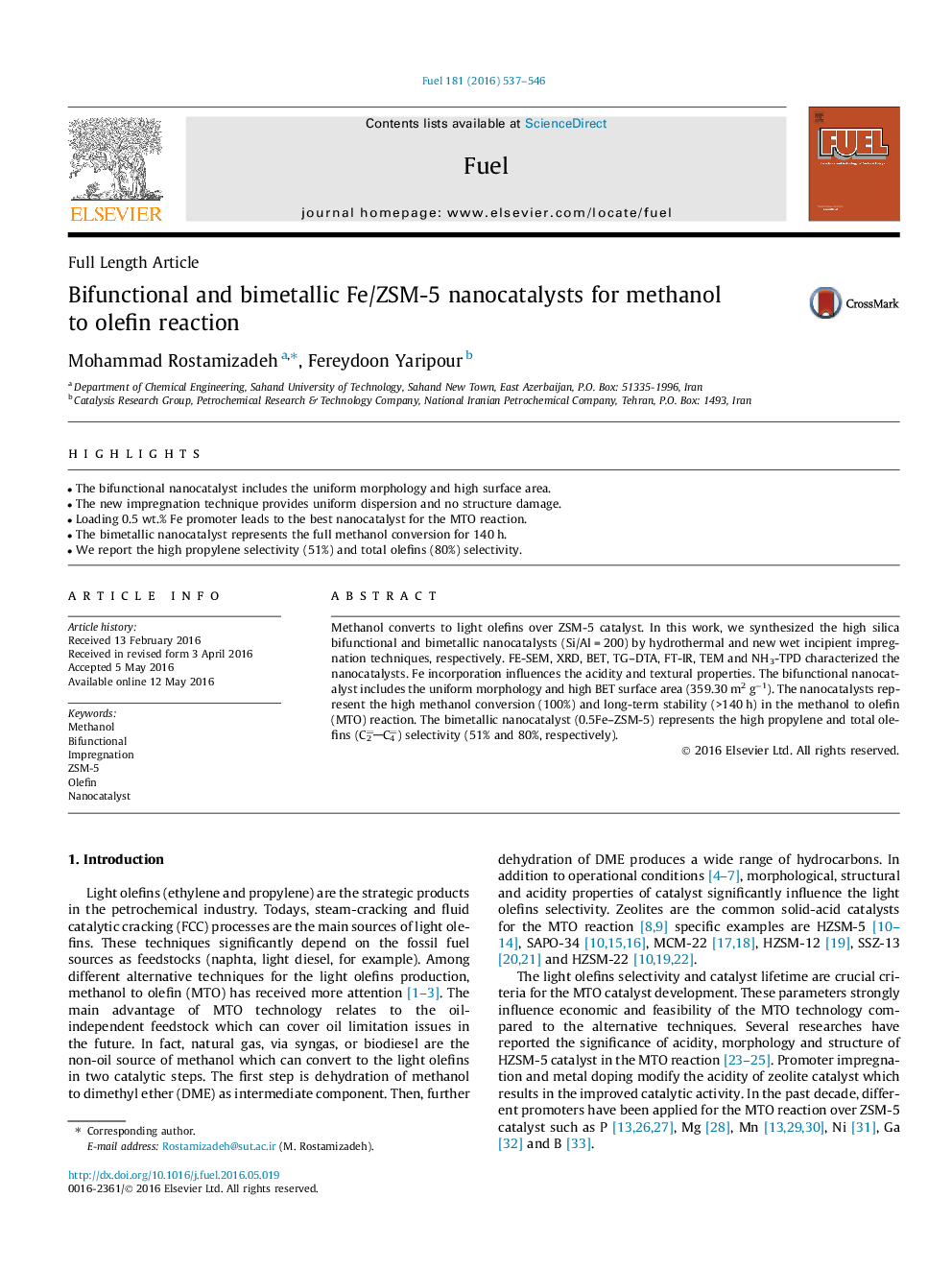| Article ID | Journal | Published Year | Pages | File Type |
|---|---|---|---|---|
| 204941 | Fuel | 2016 | 10 Pages |
•The bifunctional nanocatalyst includes the uniform morphology and high surface area.•The new impregnation technique provides uniform dispersion and no structure damage.•Loading 0.5 wt.% Fe promoter leads to the best nanocatalyst for the MTO reaction.•The bimetallic nanocatalyst represents the full methanol conversion for 140 h.•We report the high propylene selectivity (51%) and total olefins (80%) selectivity.
Methanol converts to light olefins over ZSM-5 catalyst. In this work, we synthesized the high silica bifunctional and bimetallic nanocatalysts (Si/Al = 200) by hydrothermal and new wet incipient impregnation techniques, respectively. FE-SEM, XRD, BET, TG–DTA, FT-IR, TEM and NH3-TPD characterized the nanocatalysts. Fe incorporation influences the acidity and textural properties. The bifunctional nanocatalyst includes the uniform morphology and high BET surface area (359.30 m2 g−1). The nanocatalysts represent the high methanol conversion (100%) and long-term stability (>140 h) in the methanol to olefin (MTO) reaction. The bimetallic nanocatalyst (0.5Fe–ZSM-5) represents the high propylene and total olefins (C2C4) selectivity (51% and 80%, respectively).
